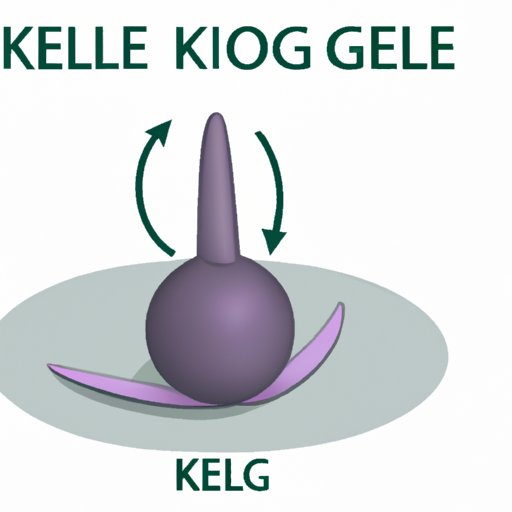
Introduction
When it comes to pelvic health, many people don’t realize the importance of strengthening their pelvic muscles. Pelvic floor muscles play a key role in bladder control, intimacy, and overall pelvic health. One of the most effective ways to strengthen these muscles is by doing kegel exercises. In this article, we will give you a step-by-step guide on how to do a kegel, discuss the benefits of strengthening your pelvic muscles, and provide tips and tricks for incorporating kegels into your daily routine.
Importance of Strengthening Your Pelvic Muscles
Weak pelvic muscles can lead to numerous problems, including bladder leakage, difficulty achieving orgasm, and pelvic organ prolapse. Studies show that up to 25% of women experience pelvic floor disorders at some point in their lifetime. Strengthening your pelvic muscles through kegel exercises can help prevent and treat these issues.
Step-by-Step Guide to Performing Kegels
Kegels are exercises that involve contracting and relaxing your pelvic floor muscles. To begin, locate your pelvic muscles by stopping the flow of urine midstream. Once you have identified the muscles, follow these steps:
- Sit, stand or lie down: Find a comfortable position where you can easily contract your pelvic muscles.
- Squeeze your muscles: Contract your pelvic floor muscles for three to five seconds, then release for three to five seconds. Repeat this sequence ten times.
- Take a break: Rest for a few seconds before doing another set. Work your way up to doing three sets of ten kegels each day.
Remember to breathe normally throughout the exercise and avoid squeezing your buttocks or thigh muscles.
The Role of Kegels in Pre- and Postnatal Care
Kegels are particularly important for women who are pregnant or recently gave birth. During pregnancy, the extra weight of the fetus can strain the pelvic muscles, leading to weakened muscles and potential problems with bladder control. Kegels can help prepare for delivery and aid in postpartum recovery.
New moms can customize their kegel routine during pregnancy and postpartum to work on different parts of their pelvic floor. Women should only perform kegel exercises according to their personal comfort levels during pregnancy, and be cautious if they have a high-risk pregnancy or have been advised bed rest.
Common Myths and Misconceptions about Kegels
One common myth about kegel exercises is that they are only beneficial for women who have given birth or have weak pelvic muscles. In reality, kegels can benefit anyone, regardless of their gender or age. They can improve sexual function, urinary incontinence, and overall pelvic health. It’s important to remember, like with all exercises, that kegels take time and consistency to see results.
Incorporating Kegels into Your Daily Routine
One of the best things about kegel exercises is that they can easily be incorporated into your daily routine. Some ideas include:
- While sitting: Tighten your pelvic muscles for five to 10 seconds, then release. Repeat 10 times, holding for longer each time.
- While driving: Squeeze your muscles at each red light for added practice.
- While watching TV: Perform kegels during commercial breaks or every time a certain character appears.
The key to long-term benefits is making kegels a habit. Consider setting a reminder in your phone or calendar to do your daily kegels.
Conclusion
Strengthening your pelvic muscles through kegel exercises can improve your overall pelvic health and prevent problems with bladder control, urinary incontinence, and intimacy. By following our step-by-step guide, debunking common myths, and incorporating kegels into your daily routine, you can start reaping the benefits of this simple yet effective exercise.




